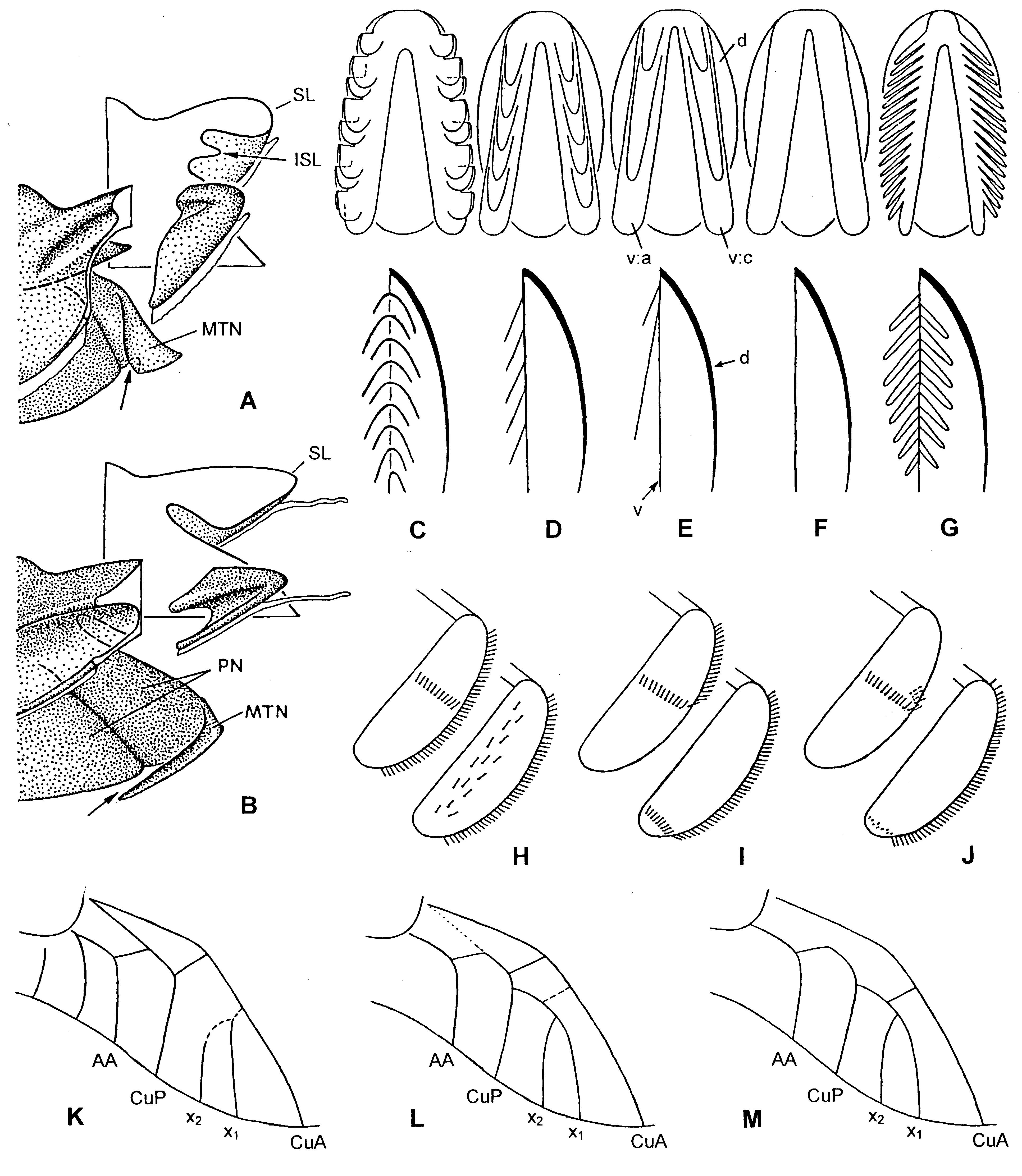CLADOENDESIS OF EPHEMEROPTERA


|
CLADOENDESIS OF EPHEMEROPTERA |
||||
 |
 |
zzz | ||

Figure 89. Ephemerella/fg1, schemes.
A–B – section of imaginal scutellum (arrow shows phragma): A – Ephemerella/fg5 aurivillii [Chitonophora]; B – Tricorythodes/fg1 cubensis [Tricorythodes]. C–G – tergalii, ventral view (upper row) and lateral view (lower row): C – most of Ephemerella/fg3; D – some Eurylophella/fg2; E – Leptohyphes/fg2; F – Tricorythodes/fg1; G – Tricorygnatha, Ephemerythus, Teloganodes. H–J – position of setae on larval fore femur (above) and middle or hind femur (below): H – Ephemerella/fg2 (not all); I – Pantricorythi (not all); J – Tricorygnatha. K–M – transformation of cubital field venation from initial for Ephemerella/fg1 (K) to that of Tricoryptera (M). (A–J – from Kluge 1992c; K–L– from Kluge 1997b).
Abbreviations: d – dorsal lobe of tergalius; ISL – infrascutellum; MPN – mediopostnotum; MTN – metanotum; SL – scutellum; v – ventral lobe of tergalius; v:a – anal branch of ventral lobe; v:c – costal branch of ventral lobe.